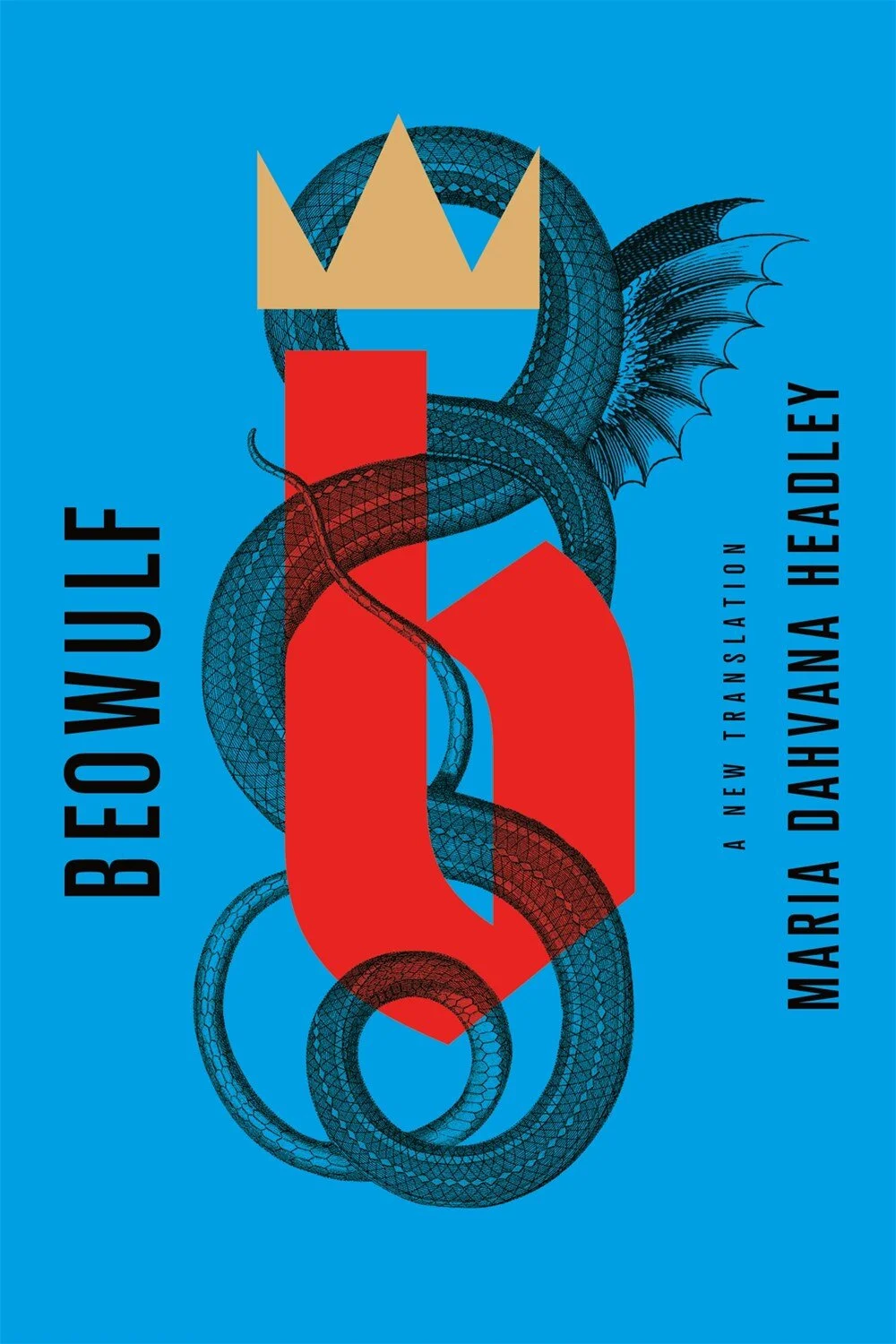'Beowulf' by Maria Dahvana Headley
My love affair with Beowulf began with Grendel’s mother, the moment I encountered her in an illustrated compendium of monsters, a slithery greenish entity standing naked in a swamp, knife in hand. I was about eight, and on the hunt for any sort of woman-warrior.
So, splendidly, begins the brilliant introductory essay by Maria Dahvana Headley to her new translation of the Anglo-Saxon epic poem, Beowulf, perhaps best-known to recent general readers via Seamus Heaney’s 1999 text, but with a far longer ‘version-history’. I first came across the poem in its original text at university, and that is in itself a version by an unknown poet of the story as it circulated sometime roughly 1000+ years ago.
Heaney famously translated the first word Hwæt as So, easing into the story like an Irish countryman, while Headley goes for the attention-grabbing Bro. But purists and nit-pickers are going to be seriously disappointed by this version: there is the odd ‘gonna’ and ‘lemme’ (as well as some entirely appropriate ‘F-words’), but this is far from an embarrassingly ‘relevant’ version. First of all, Headley tells the story with tremendous pace: it rattles along, taking its readers with it on a wave of rhythm, alliteration and assonance (there is a touch of the cadences of Hamilton). There is a sense of fun too (particularly in her imagining of the hero’s speech-patterns). Appropriately, it really needs to be spoken out loud (try it at home). It is being billed as a ‘feminist’ version of a text ‘usually seen as masculine’ (and it is a very rare one by a woman), but Headley does not shoehorn the story into a polemic. We get an intelligent and interesting re-focussing:
In this translation, I worked to shine a light on the motivations, actions, and desires of the poem’s female characters, as well as to clarify their identities. While there are many examples of gendered inequality in the poem, there is no shortage of female power.
This is clearest in her treatment of Grendel’s mother, who is always portrayed as a monster:
For many late 19th and early 20th century translators of this text, it would only have followed for the monstrous portion of Grendel’s parentage to be his mother rather than his absentee father … it’s very possible that scribal error introduced a wolf where a wife should be, and that traditions of gendered hierarchy made a monster of a mother.
And she adds:
My own experiences as a woman tell me it’s very possible to be mistaken for monstrous when one is only doing as men do: providing for and defending oneself.
Make sure you get a copy and read the full introduction (dated March 3rd 2020): it’s a superb piece of writing not just on the poem but on our world as it is now.
This translation is part of an ongoing conversation about the text over the centuries, and Maria Dahvana Headley’s lines are a marvellous freshening-up of how to look at Beowulf. In the decades to come, there will be other versions, and this may be seen as ‘merely’ of its time with its occasional ‘sidebar’ and ‘hashtag’ references. But right now we don’t have to worry about that: we can sit back and enjoy the ride.
(End).
An excellent interview of the author by Natalie Haynes for the British Library (with readings by Gemma Whelan): Myth and Masculinity: the feminist Beowulf.
For a fine introduction to the poem, Backlisted’s Hallowe’en 2020 edition was a discussion of the poem, referencing several different versions, including this one, about which they were enthusiastic.
